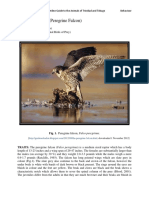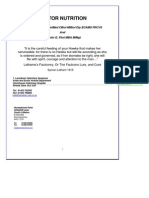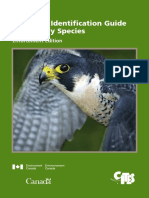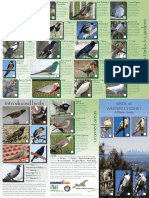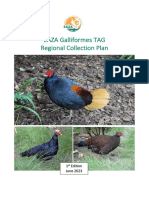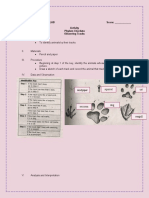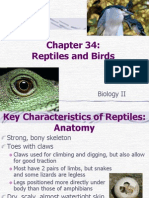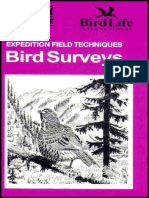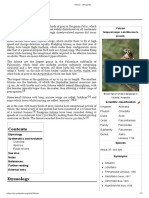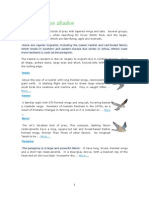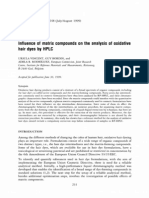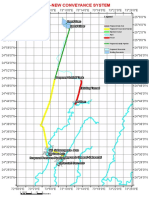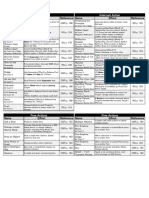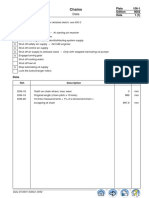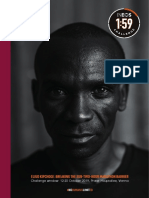www.dvmdocs.webs.
com
Assignment Title:
Falcons Rearing
(The Best Presentation)
Avian Production and Management (PH - 302)
Submitted To:
Prof. Dr. Sultan Mahmood Khan
Professor /Chairman Department of Poultry Science
Submitted by:
Muhammad Sajjad Hussain Muhammad Saleem Syed Ali Abid Bukhari Shoaib Zafar Daulat Azeem Khan
Roll No. 761-765
2007-ag-1638 2007-ag-1639 2007-ag-1640 2007-ag-1641 2007-ag-1642 761 762 763 764 765
Presented by: Muhammad Sajjad Hussain
2007-ag-1638
UNIVERSITY OF AGRICULTURE FAISALABAD, PAKISTAN
A presentation by: DVM DOCTORS
�www.dvmdocs.webs.com
FALCONS
What is a Falcon?
A falcon (pronounced /�flkn/ or /�flkn/) is any species of raptor in the genus Falco. The word comes from their Latin name falco, related to Latin falx ("sickle") because of the shape of these birds' wings. [9] In our common urdu language: It is named as Baaz or Shaheen. Falcons belong to the birds of prey, or raptors (family Falconidae). They are found everywhere on earth, except in the African rain forests and Antarctica. Falcons feed on insects and small animals, including birds smaller than themselves. They are recognizable in flight by their long tails, pointed wing tips and the habit of suddenly dropping into a dive when they spot prey below them. Most do not build nests but lay eggs in an abandoned nest, hollow tree, or a hollow in a cliff. Falcons have been trained for hunting (falconry) for hundreds of years. [1] ZOOLOGICAL CLASSIFICATION [9] Kingdom Phylum Class Order Family Genus Species Animalia Chordata Aves Falconiformes Falconidae Falco peregrinus Peregrine Falcon
POPULAR BREEDS & VARIETIES OF FALCONS
There are 38 breeds of falcon, found all over the world except Antarctica. [8] Peregrine Falcon (Falco peregrinus) The Peregrine Falcon (Falco peregrinus), also known simply as the Peregrine, and historically as the "Duck Hawk" in North America, is a cosmopolitan bird of prey in the family Falconidae. [5] It is a large, crow-sized falcon, with a blue-gray back, barred white underparts, and a black head and "moustache". [5] It has been recorded diving at speeds of 200 miles per hour (320 km/h), making them the fastest-moving creatures on Earth [9]. As is common with bird-eating raptors, the female is much bigger than the male [5]. Experts recognize 1719 subspecies, which vary in appearance and range; there is disagreement over whether the distinctive Barbary Falcon [Falco (peregrinus) pelegrinoides] is a subspecies or a distinct species. [5] Both the English and scientific names of this species mean "wandering falcon", referring to the migratory habits of many northern populations. [5] Lanner Falcon (Falco biarmicus) The Lanner Falcon (Falco biarmicus) is a large bird of prey that breeds in Africa, southeast Europe and just into Asia. It is mainly resident, but some birds disperse more widely after the breeding season. [10]
A presentation by: DVM DOCTORS
�www.dvmdocs.webs.com
It is a large falcon, at 43-50 cm length with a wingspan of 95-105 cm. European Lanner Falcons (Falco biarmicus feldeggi, also called Feldegg's Falcon) have slate grey or brown-grey upperparts; most African subspecies are a paler blue grey above. [10] The breast is streaked in northern birds, resembling greyish Saker Falcons, but the Lanner has a reddish back to the head. Sexes are similar, but the browner young birds resemble Saker Falcons even more. However, Sakers have a lighter top of the head and less clear head-side patterns. [10] The Lanner's call is a harsh "wray-e" and males are called lannerets in falconry. [10] Saker Falcon (Falco cherrug) The Saker Falcon (Falco cherrug) is a very large falcon. This species breeds from eastern Europe eastwards across Asia to Manchuria. It is mainly migratory except in the southernmost parts of its range, wintering in Ethiopia, the Arabian peninsula, northern Pakistan and western China. [11] The Saker Falcon is a large hierofalcon, larger than the Lanner Falcon and almost as large as Gyrfalcon at 47-55cm length with a wingspan of 105-129cm. Its broad blunt wings give it a silhouette similar to Gyrfalcon, but its plumage is more similar to a Lanner Falcon's. [11] Saker Falcons have brown upperbellies and contrasting grey flight feathers. The head and underparts are paler brown, with streaking from the breast down. Males (called sakrets in falconry) and females are similar, as are young birds, although these tend to be a duller brown. The call is a sharp kiy-ee. [11] Gyr Falcon (Falco rusticolus) The Gyrfalcon (Falco rusticolus), also spelled Gerfalcon, is the largest of all falcon species.The Gyrfalcon breeds on Arctic coasts and islands of North America, Europe and Asia. It is mainly resident, but some Gyrfalcons disperse more widely after the breeding season, or in winter. [12] This species is a very large falcon, about the same size as the largest buteos. They are 48 to 61 cm (19 to 24 in) long, and have a wingspan from 110 to 130 cm (43 to 51 in). [12] Gyrfalcons are somewhat intermediate between a large Peregrine Falcon and a hawk in general structure; they are unmistakably falcons with pointed wings, but are stockier, broader-winged and longer-tailed than the Peregrine. [12] Other Breeds and Varieties of Falcons [4] [8]
Brown Falcon, Falco berigora Grey Falcon, Falco hypoleucos Laggar Falcon, Falco jugger Black Falcon, Falco subniger Prairie Falcon, Falco mexicanus Common Kestral; Falco tinnunculus; the smallest sized Falcon American Kestrel or "Sparrow Hawk", Falco sparverius (American) Merlin or "Pigeon Hawk", Falco columbarius
Among all breeds / varieties of falcons, Peregrines are the most popular, well known of the falcons and these have been called nature's finest flying machine. [2] GENERAL CHARACTERISTICS [2]
Falcon's scientific name comes from the Latin word, "Falco Peregrinus" which means wandering falcon, traveler, or foreigner.
A presentation by: DVM DOCTORS
�www.dvmdocs.webs.com
There are 38 species of falcon - the Peregrine is one of five commonly found species. There are 3 subspecies of Peregrines ~ American, Artic and Peale's. Some like to migrate south to Latin America in the winter. They can migrate as far as 10,000 miles ~ farther than other birds.
BODY CHARACTERISTICS
Peregrine Falcons are about the size and weight of a crow - Slim birds with a small head. The females are larger and more powerful than males. The male is about 1/3 the size of the female. [3] Their bodies average 42 cm long & weigh; Male: 670 g & Female: 1.1 kg. [14] The female will weigh about 10.6 ounces more than the male. [3] Adult Peregrines have blue-gray wings, backs, and heads, with white undersides marked with black bars going across the chest. There faces are white under their chin. They have large, dark eyes and very sharp beaks and yellow talons (feet). [2] Their wings are thin and pointed, and span about 102 cm. [14]
[14]
LIFE SPAN: Peregrines can live up to 17 years.[2] (Sweden: 17yr 4m)
The female is called a falcon; the male is called a tiercel. [2] The traditional term for a male falcon is tercel (British spelling) or tiercel (American spelling), from Latin tertius = third because of the belief that only one in three eggs hatched a male bird. [9]
Lanner falcons (male) Saker falcons (male) Feet of a falcon Baby falcons Male of Peregrine falcons Dive of falcons Nesting ledge Nesting indentation in lose sand, soil or grass White fuzz on a newly hatched chicks
Lennerets Sakrets Talons Eyases Tiercel Stoop Aerie Scrape Down
NOISE / EYE SIGHT[2]
Peregrines make a "kek-kek-kek" noise, especially when angry or aggressive. They have very good eye sight ~ they can spot a meal up to a mile away.
FLYING / HUNTING [2]
Falconry Terms
They are raptors (Latin meaning "to seize") - birds of prey / carnivores - and eat other birds ~ sparrows, starlings, gulls, ducks, and their favorite, pigeons. In fact, during WWII they were often shot in England to keep them from eating the pigeons that were carrying important messages to the forces. Falcons are the swiftest birds of prey and are very muscular. In level flight the travel about 50 kilometers (31 miles) an hour. In a dive, called a "stoop" they reach speeds over 300 kilometers (186.33 miles) an hour. They have a unique way of hunting for food ~ they dive at their prey so fast that they overtake it by surprise, catching it in mid-air, and the speed kills the prey instantly. They are diurnal - they hunt during the day. The capture takes less than 2 minutes.
FEEDING BEHAVIOUR [2]
An adult eats about 70 grams (2 1/4 oz.) of food a day ~ that equals about 2 blackbirds. In the city it has been observed that falcons don't like to land on the ground ~ even if their meal falls to the ground, they won't go get it. In fact, they don't usually fly lower than the level of their nest. They are at the top of the food chain, so adult peregrines have no natural predators. They do however, face many threats from humans ~ use of pesticides, altering of landscape and habitats, egg collecting, hunting, and taking of the young for falconry. Baby falcons (eyases) are a tasty meal for owls, racoons, and mountail cats.
A presentation by: DVM DOCTORS
�www.dvmdocs.webs.com
BREEDING [2]:- Falcons usually begin breeding at about two years old. NESTING / EGGS LAYING [2]
Their range is about 30 miles with their nest in the center of their range. They do not like other falcons within 3 miles of their nest site. Their favorite spot for a nest is on the edge of a cliff. Their nesting ledge is called an "aerie". They don't use a lot of nesting material. Reddish brown with Peregrines prepare a saucer shaped Egg description darker brown indentation in lose soil, sand, or grass blotches. called "scrape". Clutch size 3-5 eggs The tiercel (male) arrives at the nesting site and begins a lot of fancy aerial Clutch / year Typically one displays to attract his mate in early 33 days Spring. Sometimes the male will select Incubation period several locations for a nest and the Breeding season March to May female makes the final decision. The Monogamous, female is the boss of the house, and the Breeding type Solitary nester male is cautious around her. Falcons lay 3 - 5 eggs in a clutch The Breeding location Open landscape, group of eggs are called a "clutch". Eggs Rocky cliffs range from soft pink to reddish brown with Egg laying season Mid May darker brown blotches and are slightly 40-42 days of age larger than a chicken egg - about the size Time to fly of a duck egg. Egg size: 52 x 41 mm Egg weight: 48.0 gm (of which 8% is shell). [14]
EGGS HATCHING [2]
The male and female share the responsibility of sitting on (incubating) the eggs. The eggs need to stay at a constant warm temperature and dry, or the embryo will not survive. If the air temperature is warm, the parents will leave the eggs briefly to hunt. [2] The eggs also need to be turned, which we've observed occurs as the birds shift around on the nest. There are times that it looks like the birds are actually rolling the eggs with their mouth or feet. [2] The length of incubation is 31- 33 days.[14] "Pipping" the shell is when the "eyases" (babies) begin to hatch out. They do this from the inside with an "egg tooth" (a tiny sharp point) on the end of their beak. The egg tooth disappears almost immediately. This process can take up to 2 days.[2]
BABIES (EYASES)
Newly hatched chicks are wet and covered with white down. But by three weeks of age, brownish juvenile feathers can be seen poking through the white fuzz. By five or six weeks of age, the white fuzz has been completely replaced by brown feathers. [3] Eyases are helpless. Although they have a high mortality rate. One parent (often the female but sometimes the male) stays with the chicks while the other finds food for the brood. Eyases eat an incredible amount of food - but then, they double their weight in only six days and at three weeks will be ten times birth size. [2] The eyases can be observed jumping around and testing their wings, getting ready to fly. Eyases weigh 1 1/2 ounce when first hatched. [2] Males develop faster than females; females are larger and more powerful when fully grown. In 3 weeks they are 10 times their birth weight; in 6 weeks they are full grown; and at 9 - 12 weeks they begin to hunt and care for themselves. Their first prey is small game ~ dragonflies and butterflies. [2]
LEARNING TO FLY [2]
A presentation by: DVM DOCTORS
�www.dvmdocs.webs.com
The first few days of learning to fly is dangerous to the young falcons, especially in urban areas. Wind changes can slam the birds into the ground and mirrored or illuminated windows are another hazard. Unfortunately statistics are not on their side, only one out of two manages to survive the first year.
DISEASES AND HEALTH DEFECTS Viral Diseases [8] i. Avian Pox: Causes by Pox virus usually transmitted by mosquitoes. There are small vesicles on the body, breast and mouth part of the bird. Treatment: Tribrissin (1 cc / one gallon water) or Tetracycline (11%) half tea spoon / kg body weight (orally) ii. New Castle Disease: a contagious viral disease; transmitted from one bird to another by contact and affects respiratory, digestive and muscular system of the bird. Treatment: birds should be vaccinated as per schedule; First dose (one drop) 1 week age, 2nd dose (1/2 cc) 1 month and then 3 month of age. iii. Falcons Hepatospleritis A viral disease in which there is no clinical signs and symptoms; and birds can be found died after a few hours of feeding. In this disease, liver, lungs and kidneys severely affected. Treatment: Neither vaccine nor any specific treatment. iv. Mareks Disease A viral disease that is usually characterized by paralysis of legs, wings and neck of the bird. Treatment: No specific treatment still reported. Bacterial Diseases [8] i. Tuberculosis Causes by Mycobacterium spp. very resistant bacteria characterized by respiratory depression and diarrhea. Treatment: antibiotic therapy is not so effective because causative agent is very resistant. ii. Salmonellosis Caused by Salmonella spp. - clinical findings include sever inflammation and hemorrhages of intestines resulted into bloody greenish diarrhea. Treatment: Oxytetracycline, Chloramphenicol or any sulpha drug is quite effective. For example; Furazol tea spoon / kg body weight or Tribrissin 1 cc / one gallon of water. iii. Bumble Foot A bacterial disease characterized by severe swelling of feet and wounds on the fingers. Birds usually reluctant to walk. Wounds on the feet are more prone to bacterial contamination. Treatment: Oxytetracycline or any sulpha drug. iv. Avian Cholera
A presentation by: DVM DOCTORS
�www.dvmdocs.webs.com
Heart, lungs and kidneys are mostly affected and bacteria can also found in vital organs. Transmitted via contaminated water, rodents, and cats etc. Treatment: Intramuscular injection of Oxytetracycline, Chloramphenicol or any other broad spectrum antibiotic drug. ENDANGERED STATUS OF FALCONS IN PAKSITAN
[13]
The saker (falco cherrug) and the peregrine (falco peregrinus) are the two main species used for hunting and traditional falconry. The saker is popular because it is good for desert hawking. Comparatively, the female, being brave, larger and more powerful than the male, performs well during hunting. Sakers are trapped illegally in the autumn, the time the birds young ones leave their nests, and migration starts. People having links with traders travel through various routes to reach the Middle East and trap these birds. Most of these birds come from Russia, Kazakhstan, Mongolia, China, Afghanistan, Kirghizstan and Pakistan. According to a conservative estimate, about 9,000 falcons are used for falconry with an estimated 3,000 trapped wild saker and peregrine falcons. Due to the illegal trade, the saker falcon is facing a perilous situation and is fighting a grim battle for its survival. Recently, there has been great decline in falcons number. According to some estimates, in the past 15 years there has been 53-75 per cent decline in their wild population. Consequently, certain falcons are increasingly becoming rare. These include saker falcon (falco cherrug), peregrine falcon (falco perigrinus) and gyr falcon (falco rusticolus) which are largely used in falconry. These species are listed in the CITES Appendix I or II in which commercial trade is either not allowed or allowed only with CITES permit. The CITES stands for the Convention on International Trade in Endangered Species of wild fauna and flora. It is, in fact, an international/inter-governmental agreement, which aims to ensure that any international trade in wild animals and plants species does not threaten their survival. Although the saker is listed as endangered in many countries, it is traded both legally and illegally. On account of over trapping besides other threatening factors, important species of falcons are in danger of extinction. However, in Pakistan, in light of the present grim scenario of falcon trade, the CITES has imposed a ban on trapping, importing and exporting of falcons. REASONS FOR ENDANGERED STATUS [2]
Use of the pesticide DDT (Dichloro-Diphenyl-Tricholor-Ethane) was the primary cause for the Peregrine population to begin to decline and be placed on the endangered list in the early 1970s depending on the state. Peregrines ate birds that had eaten seeds that had been soaked in the pesticide. This caused the Peregrine to stop laying eggs, or lay eggs with very this shells. When the birds tried to incubated the eggs, the shells were so thin they broke. Pesticide residues become more concentrated as they work their way up the food chain (called "bioaccumulation") and can stay in the environment for years. When DDT was banned from use in the US the Peregrine Falcon's population began to rise again. The use of pesticides is controlled in Canada and the U.S., but not in Latin America where some of the birds go for the winter. In Canada and the U.S. it is illegal to kill or disturb Peregrine Falcons in their nests. Peregrine Falcons were removed from the federal endangered species list in August of 1999, however the falcon population is being closely monitored by state wildlife departments especially in Ohio and California.
=======================================================================
A presentation by: DVM DOCTORS
�www.dvmdocs.webs.com
REFERENCES 1. http://birds.suite101.com/article.cfm/what_is_a_falcon_ 2. http://www.powayusd.com/teachers/lharvey/falcon2006/facts.htm 3. http://www.raptorresource.org/facts.htm 4. http://www.avianweb.com/falcons.html 5. http://www.avainwebs.com/peregrinefalcons.html 6. http://animals.nationalgeographic.com/animals/birds/peregrine-falcon.html 7. http://www.articlealley.com/falcons.htm 8. Siddiqui, M. Z., Ahmad, F., Modern Poultry Production, Zarai Digest Publication 9. http://en.wikipedia.org./wiki/falcon 10. http://www.avianwebs.com/lannerfalcons.html 11. http://www.avianwebs.com/sakerfalcons.html 12. http://www.avianwebs.com/gyrfalcons.html 13. http://dawn.com.pk/weekly//dmag/archive/060604/dmag7.htm 14. http://blx1.bto.org/birdfacts/results/bob3200.htm =======================================================================
A presentation by: DVM DOCTORS
